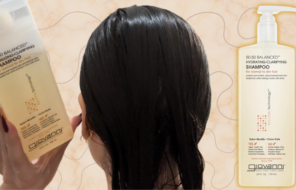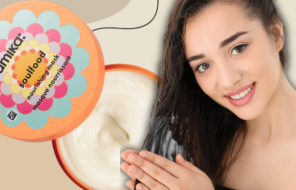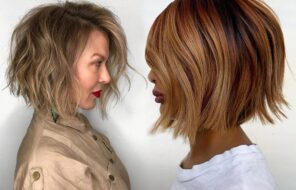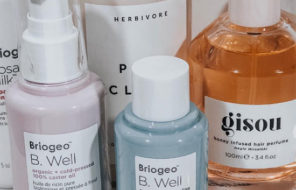I believe every hair dye enthusiast should try red hair at least once, just to see how it feels. Who knows? You might find yourself falling in love with this exceptional hair color choice.
In this article, I’ll go through the fascinating history of red hair. I’ll help you choose the perfect shade of red hair for your skin tone, and then I’ll help you match your makeup and fashion to it. If you’re a DIY kind of person, I’ll explain how to get that perfect red hair color at home, and no matter where you go for it, I’ll also give you all the tips for maintaining red hair dye.
In this article:
- Red Hair History & Facts
- How to Choose the Perfect Red Hair Color for Your Skin Tone
- How to Dye Your Hair Red
- Tips for Maintaining Your Red Hair Color
- Makeup Tips for Red Hair
- Fashion Tips for Red Hair
Red Hair History & Facts
These days, red hair colors are constantly coming in and out of style, with some sort of red hair shades always reigning during the different seasons. However, historically red hair was not always a great thing to have.
Natural red hair first made an appearance in central Asia as a genetic mutation in the MC1R gene that also led to pale skin, sun sensitivity, and freckles. This mutation leads the body to produce more of a type of pigment called pheomelanin that is more reddish in hue, as opposed to eumelanin which is more common and brownish in tone.
This happened over 70,000 years ago, although another mutation in the gene occurred 30,000 years ago in Europe, so there are actually multiple genetic origins to red hair and a few different types of alterations in the MC1R-gene. Those with red hair and pale skin had an easier time surviving in dark, sunless regions thanks to their skin’s ability to produce vitamin D more easily, which likely explains why the trait is more dominant in northern regions.
These days natural red hair is most common in Ireland, Scotland, and the coastal regions of Scandinavia. In fact, it is extremely likely that red hair first became dominant in Norway and then arrived in early Celtic populations because of Viking conquests in the 8th-11th centuries.
Since red hair is a recessive trait, meaning that there is a low chance of developing it even if one is genetically predisposed to it, those who did have red hair were often the victims of superstitious beliefs. They were associated with loathed biblical figures like Cain or Judas Iscariot, accused of witchcraft, or simply considered unlucky or lascivious.
These days, while children with red hair often experience bullying, the attitudes have still mostly shifted. Women with red hair are often imagined to be fiery, exciting, sexy, and unpredictable, which is why it is such a popular hair dye choice.
How to Choose the Perfect Red Hair Color for Your Skin Tone
As with anything to do with fashion, beauty, or makeup, rules are meant to be broken, so take everything I have to say with a grain of salt, and feel free to trust your own instincts. These are general suggestions, although occasionally you will find that actually going opposite of what I say can lead to really unique results. Red is for the daring, so please be creative!
All of that being said, different undertones will look different next to the various red hair colors. I break the guide down based on skin undertones, with most people having either warm, golden skin, or cool skin with a pink touch. Some people are perfectly neutral, in which case they can get away with nearly every red hair color.
Red Hair Colors for Fair Skin with Cool Undertones
If your skin is on the lighter side of things, with a cooler undertone that leans towards pink, then you can experiment with both cool and warm red hair colors, but stick to something lighter.
The more coppery warm shades will bring out a flush in your skin, which can look effortlessly natural, but it can also look irritated and sickly, especially if you have a lot of redness to your skin. You might feel more comfortable with lighter mahogany shades and muted cherry reds, and you can even try going super light with a rose quartz shade.
Red Hair Colors for Fair Skin with Warm Undertones
If your skin is on the warmer side of things, but still fairly light, you might definitely find yourself preferring medium toned coppers and auburn red hair colors. These will look natural and bright, and will not contrast too greatly against your skin.
Stay away from overly cool red hair tones, especially around your face, as they can bring out sallowness in your skin. A very well balanced burgundy or a sultry cherry will still work with your hair, as long as it is not too purple.
Red Hair Colors for Medium Skin with Cool Undertones
If your skin has distinct cool undertones, with bluer veins and a slight pinkiness, but is also on the slightly more tanned side of things, you actually have the option of choosing between both warm and cool red hair colors.
Avoid overly light shades like strawberry blonde or rose quartz, and instead wear red hair shades that are a touch deeper than your skin. Medium coppers will make you look like a natural redhead, auburns are guaranteed to flatter, and eggplants, burgundies, and cherry reds are sure to turn heads.
Red Hair Colors for Medium Skin with Warm Undertones
Those with warmer skin that has golden or olive undertones are much likelier to tan than those that have cool skin, so you might find yourself wanting to make red hair colors work for you even in the summer. Very cool shades of red hair can bring out yellowness in the skin, while violet reds can bring out the green in olive skin, so it is important to be careful.
Sticking to more neutral shades of red and warm-leaning colors will be safe bet – just picture Rihanna. Playing with shades of red and copper that are highlighted with gold will complement your skin’s undertone in a very beautiful way.
Auburns, coppers, and ginger-leaning shades are all a safe bet, and it is best if they are just a few shades darker than your skin tone.
Red Hair Colors for Dark Skin with Cool Undertones
With darker skin that has cool undertones, burgundies and eggplant shades look super chic and almost like they could be natural, rather than the gothic effect they can have on most others.
With cooler undertones to your skin, it is usually better to stay away from overly warm coppers, although neutral auburns and intense cherries can work beautifully. Don’t be afraid of playing around with very vivid blue-reds for a very striking effect.

Red Hair Colors for Dark Skin with Warm Undertones
When darker skin has warmer undertones, red hair colors can bring out a lot of beauty, especially when they are the warmer shades like orange, copper, and fire engine red.
Cool red hair shades like eggplant and burgundy may still work, depending on exactly how much yellow there is in your skin – if you are warm toned but leaning towards neutral, they can look great, but if you are extremely warm toned, they can make you look sallow.
How to Dye Your Hair Red
It’s pretty brave to make the switch to red hair at home, but if you’re confident about your hair painting skills then by all means give it a try! If you are hoping for a more elaborate balayage or ombre, or if you’re coveting a three-dimensional look with streaks in different shades of red hair colors, then definitely book a salon appointment, but you can certainly achieve a simple red tint by yourself.
Step 1: Prep Your Hair
- Your hair’s starting point should be dry and unwashed. Unwashed hair tends to hold on to hair dye better, and it won’t become as damaged by the dye, thanks to the natural oils that the hair produces.
- Make sure your hair is not darker than the shade of red you would like to dye your hair. If your hair is very dark brown or black, and you are hoping for gleaming copper red hair, then you will definitely need to bleach your hair before dyeing it. It is better to wait a few days between bleaching the hair and dyeing it red, as over-processing the hair can seriously damage it.
- Put on clothes that you don’t mind getting damaged by the red hair dye. The best thing to wear is an old button-up shirt that you can put on and remove without having to pull over your head.
- Spread vaseline along your hairline to avoid having red hair dye stain it.
- Make sure you have everything you need in front of you. That means gloves, a mixing bow, a hair dye applicator brush, red hair color, and developer. If you are using box red hair dye, everything should come in the kit, and it may include other things that you might have to add into the mix or a conditioner and shampoo that you can use at the end.
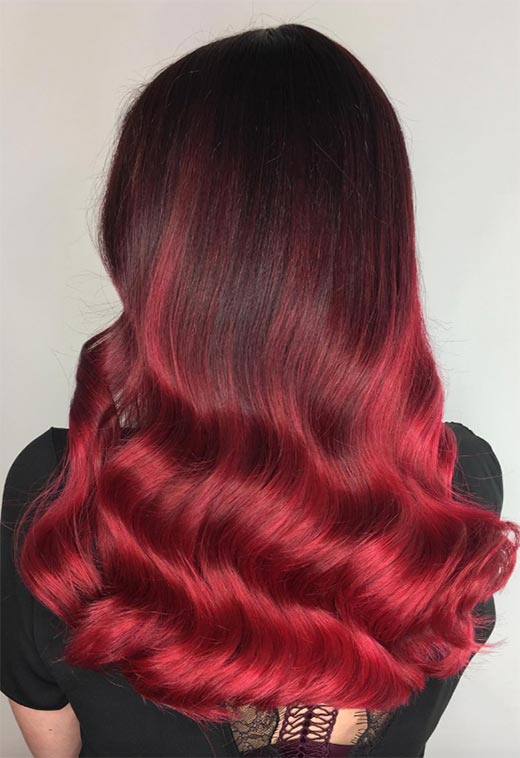
Step 2: Apply the Red Hair Dye
- Start separating your hair based on the style in which you plan to dye it. I usually recommend starting by clipping up the top half of the hair, and starting to dye the lower half, working from the inside outwards.
- Pick a small section of hair, around 2.5 cm in thickness, to dye first. Keep dyeing in small sections of hair, in order to get the red hair dye covering everything thoroughly, and to avoid missing any areas.
- With the brush, apply the red hair dye close to the roots (unless you’re opting for a balayage or ombre, in which case apply the dye where you would like it to start), and brush it downward all the way to the ends of the hair. If necessary, apply more dye as you work your way down to the ends.
- Continue applying red hair dye in this way, until you’ve covered all of your hair. As you finish dyeing sections of hair, release more sections of hair out of your clip.
- Once you’ve covered your whole hair in red hair dye, go over it one more time to ensure you haven’t missed any pieces. Do so by massaging your hair with your hands, and applying extra hair dye if you happen to have any.
- If you are dyeing your roots, go over your roots one last time by massaging them and your scalp with your fingers to work the red hair dye in.
Step 3: Waiting and Washing the Hair
- Once all of your hair is covered in red hair dye and it’s all been massaged in thoroughly, pile it all up on top of your head and clip it in. For extra bonus points, put on a shower cap to avoid making a mess of anything.
- Now it’s time to wait! Hair dye normally takes between 20 to 45 minutes to process. Don’t wait any longer than the time recommended, as that can damage your hair.
- During the wait time you can use a cotton ball dipped in rubbing alcohol to remove any hair dye stains from your skin.
- Once the required amount of time has passed, it’s time to rinse out the hair dye! Hop into the shower, and turn on the tap to a lukewarm temperature.
- Rinse out the red hair dye without using any product – just let the water remove the excess.
- Unless your red hair dye comes with a particular shampoo, avoid shampooing your hair. Instead, just condition it with a nourishing hair conditioner or mask. Let the hair conditioning treatment sit in your hair for 2-3 minutes for the full nourishing effect.
- Rinse out the hair conditioner or mask, and finish off the rest of your shower.
- Once you’re done, it is best to gently towel dry the hair, or to let it air-dry. For the next few days avoid any kind of heat styling, as it can damage your hair.
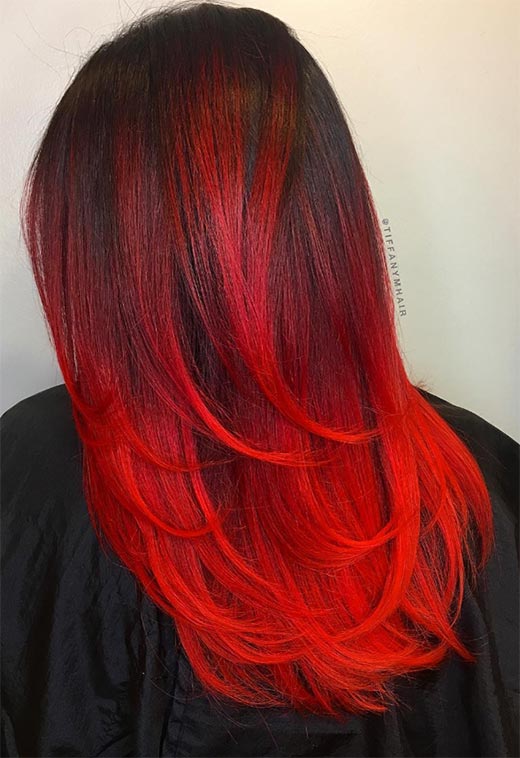
Tips for Maintaining Your Red Hair Color
- The key part of keeping red hair dye looking good for as long as possible is to shampoo as little as possible. Even the gentlest, most color-safe shampoos will still fade your red hair dye, so it is important to try to limit how often you wash your hair. If you can get away with it, only wash your hair once or twice a week.
- When you do shampoo your hair, make sure to use a shampoo that is sulfate-free. Sulfates are harsh cleansing agents that seriously strip the hair of both oils and color. Use a color-safe shampoo instead.
- For extra bonus points and vivid redness, use a red shampoo or conditioner. These special shampoos and conditioners are not just color safe – they are infused with red color, so each time you wash your hair you deposit a bit more dye into it, ensuring it remains looking bright and fresh.
- To help you use shampoo less often, you can use the aid of dry shampoos and dry conditioners. Dry shampoos are powders that will absorb the oils from your hair, and allow you to wait longer in between washes.
- Hair dyeing damages the hair and removes needed emollients from it, so masking your hair to bring back much needed moisture can greatly increase the health of your hair, making sure it looks and feels great. Look for hair masks rich in healthy oils like coconut and argan oil, as well as hydrators like glycerin and panthenol.
- If, after you’ve made the switch to red hair, you find that your hair has gotten especially weak or it starts to break then you might need a protein treatment. You can opt for something like Olaplex, or simply purchase a mask that contains proteins like keratin, or soy and silk proteins.
- Definitely avoid heat styling your hair as much as possible. Heat styling tools damage the hair, so it’s better to either avoid them altogether or to try to lower the temperature and use heat protectant sprays.
- If you don’t have a lot of free time to go to the hair salon for dyeing appointments regularly, you might want to opt for having balayage style red hair, where you keep your roots their natural color, and dye your hair red in streaks that become gradually more numerous the closer you are to the ends. Balayage hair colors are super trendy these days, they look more natural than an ombre, and they are much more forgiving to those who tend to go longer in between salon visits.
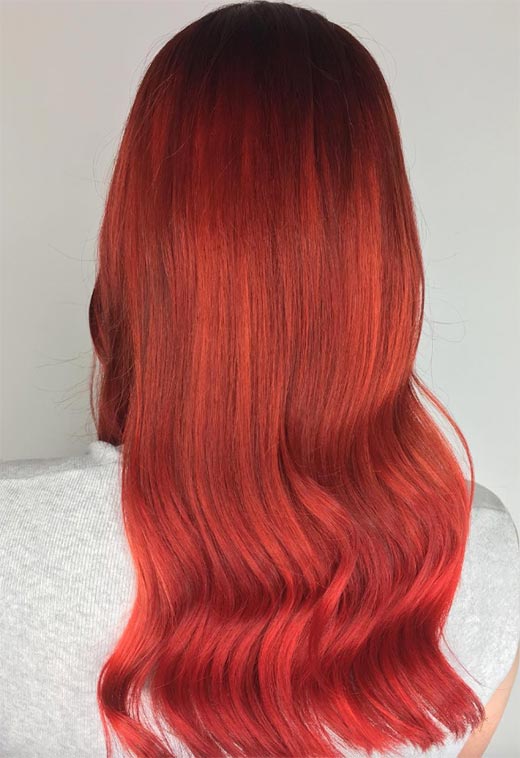
Makeup Tips for Red Hair
When you change your hair color, it is always a good idea to re-examine your makeup, and perhaps to make a few changes. My advice might help you make some tweaks to your look to suit red hair better, but please don’t feel stifled! After all, with red hair so vibrant, you should let it inspire you to get creative!
Foundation for Redheads
Red hair of all undertones can bring out red tones in the skin, while cool red tones will bring out any sallowness your skin might have in it. Because of this, you might want to make sure that either your skin care game or foundation game is on point, especially if you’re going to wear other makeup items.
You may want to choose a foundation that has a slightly higher coverage than products you’ve used in the past. Match your foundation to your neck and chest, and make sure its undertone matches the undertone of your skin.
Contour, Highlight, and Bronzer
You might find that some red hair shades seem to wash you out, especially if you have very fair skin or if the hue of your hair is a similar hue to your skin tone (meaning that your hair is not significantly lighter or darker than your skin, but is at about the same level).
After dyeing your hair red, especially if you’ve gone for a darker shade like auburn, cherry, deep copper, mahogany, or burgundy, you are very likely to find that you need to up your contour or bronzer usage to avoid looking pale. Apply a dusting of contour just below your cheekbones and to your temples for that perfectly contoured look, or opt for a touch of bronzer along the tip of the nose and the cheeks.
There are less rules when it comes to highlighting – if you love highlighting your skin, use a fun highlighter in a shade that won’t be too cool or too warm and that will match your skin tone.
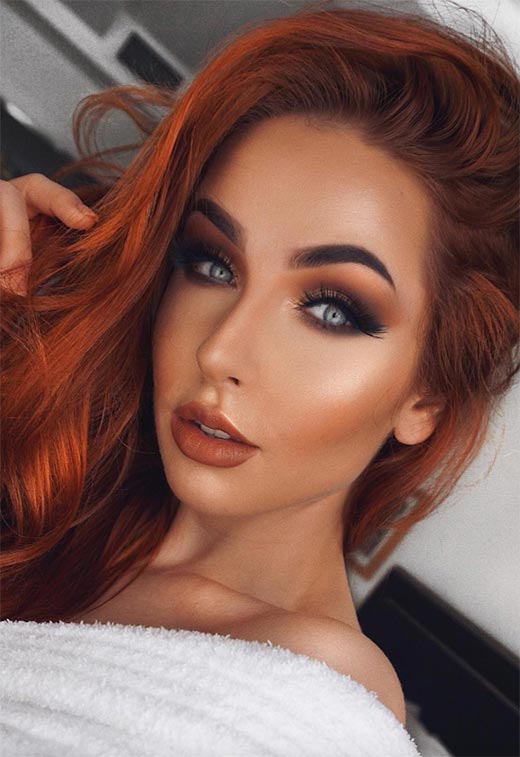
Blushing Tips
For that traditional flushed redhead look, blush is absolutely a must! If you prefer to play it safe, opt for a blush with a neutral undertone like a rose, or a blush that has an undertone that matches the undertone of your hair. This means that if your hair is dyed a warm red like a copper or ginger, then definitely wear a warmer blush like a peach or even an orange.
On the other hand, if you’ve dyed your hair a cool red tone, you can safely opt for slightly cool blushes like raspberry or anything that leans towards pink or purple. It is totally fine to wear a warm blush with cool red hair and vice versa, but it does require a fine eye for colors to avoid clashing.
Eyebrows
Eyebrows are possibly the one feature that requires the most change, since many of us expect our eyebrow color to match our hair. You don’t have to dye your eyebrows to match your red hair and you don’t even have to fill them in with a matching shade, unless you really want to rock that anime look.
Instead, you have a few routes you can take. The first one, which I recommend to those dyeing their hair a more natural, warmer shade of red like ginger or copper, is to fill in your brows with a warm golden brown shade of brow powder, pomade, or pencil. The warmth of your brows will complement your hair, without being overly matchy.
The second is the shade I recommend to those who have dyed their hair a darker shade of cool red including cherry, burgundy, eggplant and mahogany. With these kinds of deeper red hair shades, it is best to fill the eyebrows in with a cool-brown shade, meaning a shade of brown that has red and blue undertones.
Eyeshadows for Redheads
As always, neutrals will never clash, so if you are not an eyeshadow master, stick to safer shades like beige, champagne, taupe, and brown. Other variations on neutrals like bronze, dark brown, and black, not to mention all kinds of metallics, can also be thrown in for some extra fun.
If you do want to play with color, have a look at the color wheel. Shades of green, which are opposite red, and shades of blue, which sit opposite orange, can clash with your red hair if they are too dark or too bright. Muted, forest or earth green shadows, as well as blue jewel tones can work but only if you are very confident with your eyeshadow application.
A monochrome look can be super nice! Coppers paired with golds, and burgundies paired with shimmery soft pinks are two eyeshadow combinations that can look astounding on all kinds of redheads.
Lastly, never forget the irresistible effect of a nude eye with just a flick of razor-sharp liquid eyeliner!
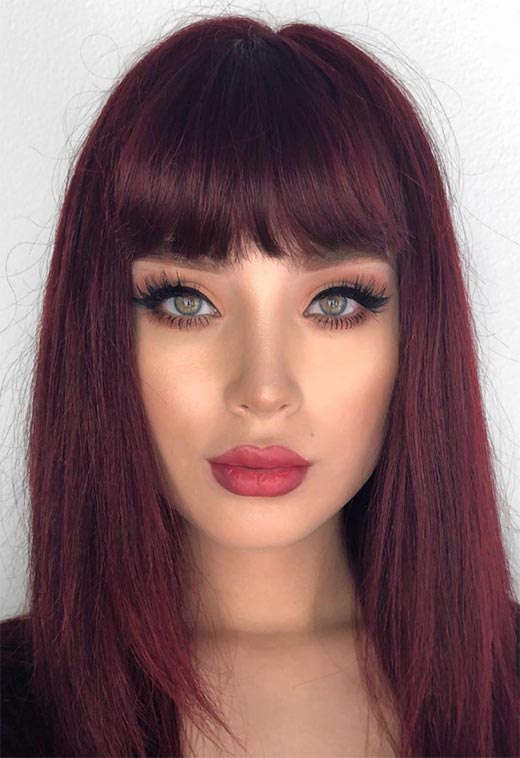
Lipstick for Redheads
Much like with blushes, it is generally easier to match your lipstick to the undertone of your hair. This means wearing warmer peach and red lipsticks if your hair has been dyed a warm red, and wearing cooler lipsticks in berry, magenta, rose, and blue-red shades if your hair has been dyed a cool red.
Neutral, “my lips but better” shades like raspberry will look good on anyone. If you are feeling a little more daring, and if you are very confident with your color matching skills, then feel free to experiment with clashing undertones – it is risky, but it can have a very unique pay off.
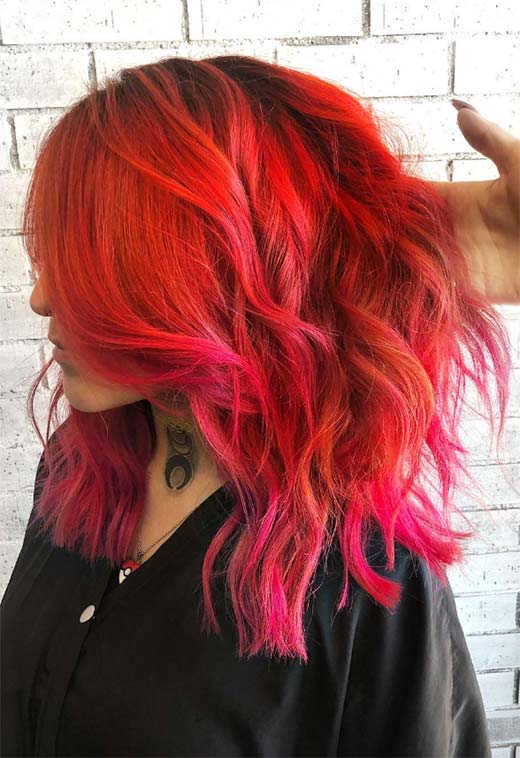
Fashion Tips for Red Hair
- Much like with makeup, paying attention to the color wheel will help you know exactly what kind of effect your clothing will have on your red hair.
- The opposite color of red on the color wheel is green, so when the two colors are put together, they both seem much stronger. In the same vein, warm orange reds seem stronger when placed next to blue, and cool purple reds stand out next to yellow-green shades. Wearing clothing that is the opposite color of your red hair can flatter, or it can clash, depending on how you style it and the effect you’re hoping to achieve.
- Try color blocking your outfit, and remember that your red hair is part of the process. You can create all kinds of looks with patterns like split complementary (ginger hair with a green top and light blue jeans), triadic (burgundy hair, orange top, and a teal skirt), and more. Play around and have fun!
- The kind of fabric you use also matters. A jewel toned, deep green will look gorgeous with copper hair, while a bright green cotton fabric might not work as well.
- Be careful with bright reds, as they can fight against the red tones in your hair. This is not to say that red is totally off the table, but really evaluate how it plays with your red hair, especially if it leans more towards warm.
- If you are only daring when it comes to hair color, you can actually breathe a sigh of relief. Neutrals look amazing with red hair, since they really let your hair take center stage. You can wear blacks, whites, and browns without having to worry, and you can mix and match them as you please.
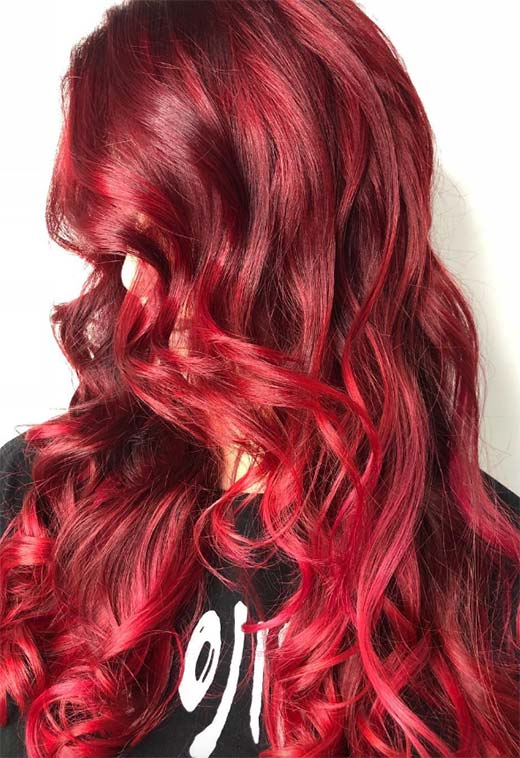
Photos via @elissawolfe, Instagram


